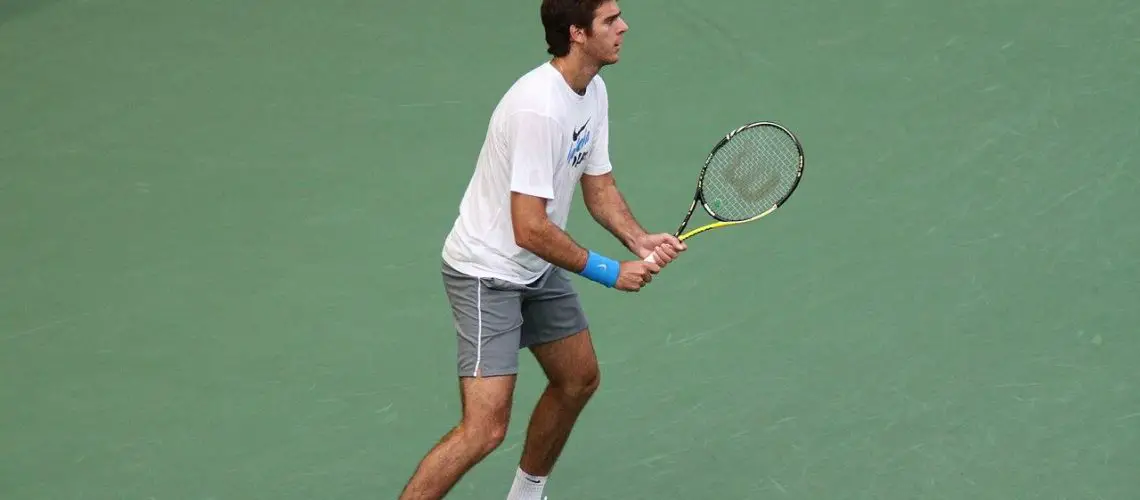We may earn money or products from the companies mentioned in this post.
Brief Overview of the Game of Tennis

Tennis, a captivating and highly competitive sport, has a rich history that dates back centuries Originating from ancient games played with handballs, it evolved into the modern sport we know today With its roots in Europe, tennis gained significant popularity during the 19th century and eventually spread worldwide
Today, tennis is enjoyed by millions of players and fans around the globe From local club matches to grand slam tournaments like Wimbledon and the US Open, the sport captures the hearts of both casual enthusiasts and dedicated athletes
Importance of Switching Sides in Tennis
Switching sides during a tennis match might seem like a routine occurrence, but it holds great significance in gameplay and strategy As players change ends of the court after every odd-numbered game, several factors come into play that can influence the outcome of a match
Significance in Gameplay and Strategy
The act of switching sides allows players to experience an equal distribution of advantages and challenges throughout a match The playing conditions can vary depending on factors such as wind direction or sunlight angles By alternating sides, players mitigate any potential unfair advantages caused by these external elements
In addition to evening out external influences, changing sides also impacts player decision-making It forces competitors to adjust their tactics based on their position on the court Different approaches may be required when playing from one side compared to another due to variations in shot angles or court dimensions
Effects on Player Performance
The act of switching sides can have psychological effects on player performance as well As they change ends, players often take this opportunity to mentally reset themselves and strategize for the upcoming games This break in momentum allows them to refocus their energy and approach each set with a fresh mindset
Moreover, switching sides can also impact physical performance Tennis is a physically demanding sport that requires players to adapt to the changing conditions on the court By alternating sides, players engage different muscle groups and adjust their footwork accordingly, which helps prevent fatigue and maintain optimal performance throughout the match
In conclusion, switching sides in tennis plays a vital role in maintaining fairness, altering gameplay strategies, and rejuvenating player performance It adds another layer of complexity to this thrilling sport and ensures an exciting and dynamic experience for both players and spectators alike
Rules governing side-switching in tennis

In the world of tennis, there are certain rules and protocols that govern when and how players switch sides during a match Understanding these rules is crucial for players and fans alike to fully grasp the intricacies of the game Let’s delve into the details
Understanding the scoring system
Before we dive into side-switching, it’s important to have a solid understanding of the scoring system in tennis The structure consists of points, games, sets, and ultimately, matches Points are awarded for each successful rally, games make up sets, and sets determine the overall outcome of a match
Tiebreaks also play a significant role in tennis matches When a set reaches 6-6 in games, a tiebreak is played to determine the winner of that particular set Tiebreak rules can have implications for side-switching as well
When to switch sides during a match
Now that we have grasped the basics let’s explore when exactly players switch sides during a match
-
After odd-numbered games within a set:
In most cases, players will switch sides after every odd-numbered game within a set (ie, after the first game, third game, fifth game, etc). This ensures fairness by accounting for any potential differences in court conditions or wind direction -
Example scenarios:
For instance, if Player A wins the first game and Player B wins the second game, they will switch sides before starting the third game This pattern continues until one player wins six games and clinches the set -
Exceptions and special cases:
However, there are exceptions to this rule In tiebreak situations, players switch sides after every six points instead of games Additionally, if a set reaches 6-6 and a tiebreak is played, the players switch sides after every six points during the tiebreak as well -
Switch at the end of sets:
At the conclusion of each set, regardless of its outcome, players will also switch sides This ensures fairness and equal opportunity for both competitors throughout the match
In summary, side-switching in tennis follows specific rules based on the scoring system and game structure Players switch sides after odd-numbered games within a set and at the end of each set These protocols ensure fairness and account for potential differences in court conditions during play
Factors Influencing Side-Switching Strategies

In the ever-competitive world of tennis, players are constantly searching for an edge over their opponents One strategy that can give them an advantage is side-switching during a match Side-switching refers to the decision to change sides of the court between games or sets This strategic move can impact the outcome of a match and should not be underestimated
Environmental Factors
When it comes to side-switching strategies, environmental factors play a crucial role in decision-making Firstly, weather conditions such as wind direction and speed can significantly affect a player’s performance A strong headwind may make it difficult for a player to hit powerful shots, while a tailwind can help increase ball speed and control
Sunlight is another environmental factor that cannot be ignored Depending on the time of day and court orientation, players may experience glare or shadows which can affect their visibility and judgment on shots These conditions may prompt players to switch sides strategically to gain an advantage from better lighting or avoid any visibility issues
Court surface is also an important consideration when deciding whether to switch sides or not Different surfaces like clay, grass, or hard courts have distinct characteristics that influence gameplay Clay courts tend to slow down the ball and favor baseline rallies, while grass courts offer faster play with low bounce Hard courts provide balanced gameplay but can vary depending on their composition
Player Preferences and Tactics
Aside from environmental factors, player preferences and tactics also come into play when determining side-switching strategies
The advantage of being right-handed or left-handed can heavily influence a player’s decision to switch sides during a match Left-handed players often have an advantage against right-handed opponents due to the different angles they create with their shots Switching sides can disrupt the opponent’s rhythm and force them to adjust their game plan accordingly
Another factor to consider is the player’s preferred gameplay style Some players adopt an aggressive approach, relying on powerful shots and attacking the net, while others prefer a defensive strategy, focusing on consistency and counterpunching Side-switching can be used strategically to exploit weaknesses or exploit strengths based on the opponent’s playing style
In conclusion, when it comes to side-switching strategies in tennis, various factors come into play Environmental conditions such as weather and court surface can impact a player’s performance significantly Additionally, player preferences and tactics, including handedness and gameplay style, influence the decision to switch sides strategically By carefully considering these factors, tennis players can gain a competitive edge over their opponents through effective side-switching strategies
Tips for Effective Side-Switching Management

When it comes to managing side-switching during a match, mental preparation is key The ability to stay focused during transitions can make all the difference in maintaining a competitive edge By keeping your mind sharp and attuned to the game, you’ll be able to adapt quickly when switching sides
1 Staying Focused During Transitions
Switching sides can disrupt the flow of a game, but it’s crucial not to let it derail your concentration One effective strategy is to visualize the upcoming switch before it happens By mentally preparing for the change, you’ll be able to seamlessly shift your focus and maintain your performance levels
2 Adjusting to Changing Conditions Quickly
Sometimes, the conditions on one side of the court or field may differ from the other This could include factors such as wind direction or lighting conditions To effectively manage side-switching, be adaptable and quick in adjusting your game plan accordingly Assess the new conditions promptly and make any necessary changes to optimize your performance
Physical Considerations for Side-Switching

In addition to mental preparation, there are physical considerations that can contribute to effective side-switching management Taking care of your body before and during matches will help prevent injuries and conserve energy
1 Warming Up/Stretching Before Matches
Prioritize warming up and stretching before each match or game session This prepares your muscles for action and reduces the risk of injury during sudden movements or changes in direction that often occur when switching sides A proper warm-up routine helps promote flexibility, agility, and overall physical readiness
2 Conserving Energy Throughout Matches
Switching sides can be physically demanding, especially in long matches or games with multiple side-switches It’s important to conserve your energy throughout the entire duration of play Pace yourself and avoid exerting unnecessary effort during transitions By managing your energy levels effectively, you’ll be able to maintain consistent performance and endurance
By implementing these tips for effective side-switching management, you’ll enhance your ability to adapt quickly, stay focused, and optimize your physical performance With proper mental and physical preparation, switching sides will become an opportunity rather than a challenge
Useful Links

Tennis Rules (The Extremely Easy Guide)
Breaking the Rules: Making changes to the changeover
Can someone please explain the rules on changeovers
US Open 101: a USOpen.org guide to how tennis works.
Tennis Rules Explained – The Basics of Tennis
Tennis Rules on Switching Sides
After a tennis tiebreak is done, do you always switch sides …
Tennis | Rules and Equipment | Serve basics: changing ends
12-Point Tie-Break
Tennis explained: Learn the game
When Do You Switch Sides in Tennis? Guide
10 PT Super Tiebreaker Serving & Receive
Table Tennis Rules Scoring
Pickleball Rules
Rules of Tennis | Wanless Park Tennis
Tennis rules: Know how to play
A Tennis Player’s Guide to Errors and Scoring Disputes
How Does A Tennis Tie-Break Work?






